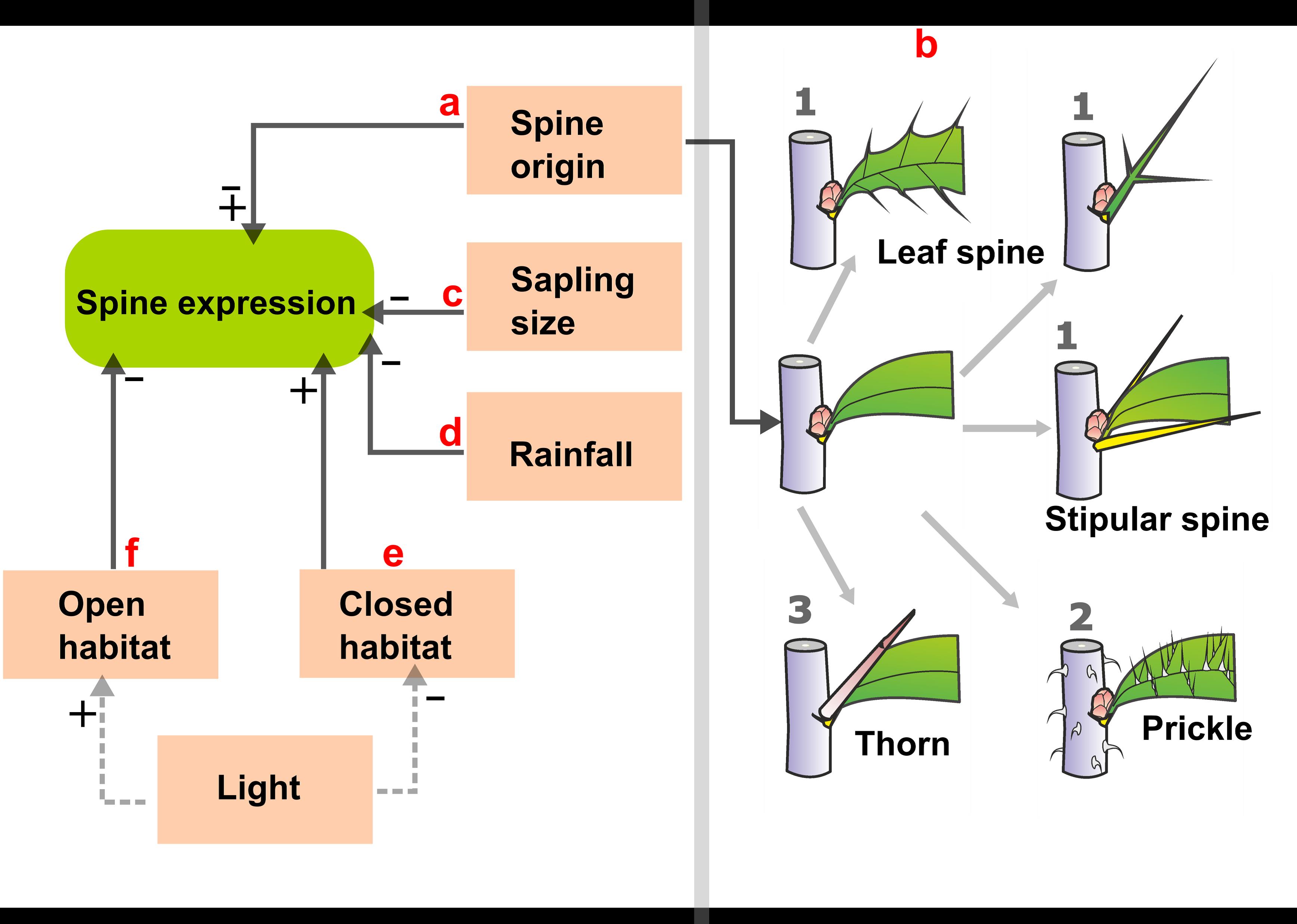Spines defend plants against large herbivores and how early they emerge in saplings may be one of the strongest predictors of sapling survival in herbivore-rich environments. Even though deployment of spines in saplings varies substantially across species, little effort has been directed at understanding the sources of this variation.
In a study published online in Annals of Botany, researchers from Xishuangbanna Tropical Botanical Garden (XTBG) provided the first detailed evaluation of constitutive patterns of early expression of spines among saplings of 45 spinescent species, grown under common conditions.
To understand whether spiny plants with different spine types or from distinct environments have evolved different strategies for early spine expression (in order to survive the limitations encountered in their native environments), the researchers sampled 45 spinescent species across the angiosperm phylogeny that naturally occur under diverse environments and grew them under common garden conditions.
The researchers evaluated the influence of sapling size, spine type and species’ environmental niche (light and precipitation niche) on early expression of spines.
They then assessed constitutive expression of spines (i.e. baseline defense expression) by quantifying emergence timing and biomass investment in spines at two temporal periods (at 5 and 15 weeks after transplanting).
They found that variation in the onset of spines depended on the spine type possessed by a species and the environment from which species originate (i.e. light and precipitation niche).
Further, they found that, across species, investment in spine was influenced by sapling size but this effect was contingent on spine type and light niche.
“Our findings, together with other studies, provides insights into the roles of herbivory, environment and developmental controls on defense investment in juvenile woody plants,” said Prof. Kyle W. Tomlinson, principal investigator of the study.
Contact
Kyle W. Tomlinson Ph.D Principal Investigator
Center for Integrative Conservation, Xishuangbanna Tropical Botanical Garden, Chinese Academy of Sciences, Mengla,Yunnan 666303, P. R. China
E-mail: kyle.tomlinson@xtbg.org.cn

Conceptual diagram showing how different factors are predicted to affect early spine expression in saplings. (Image by Mohammed Armani)

